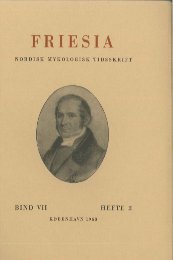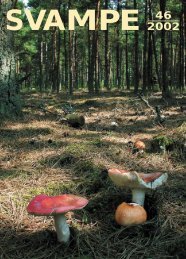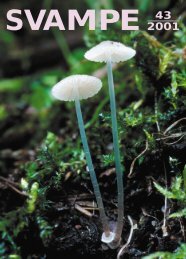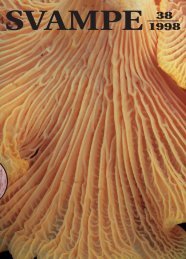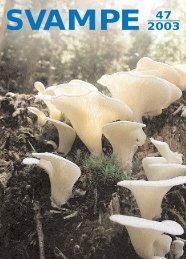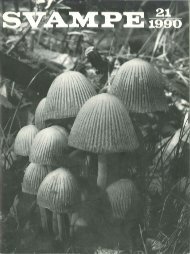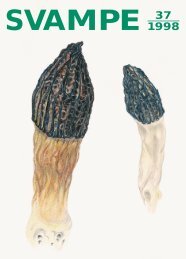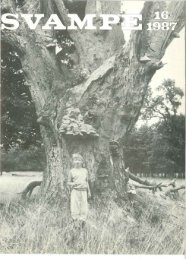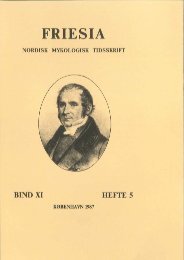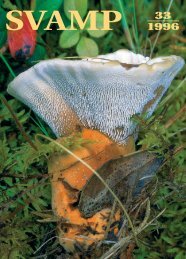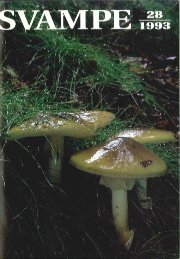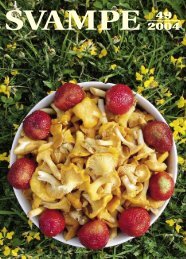Friesia X, 4-5
Friesia X, 4-5
Friesia X, 4-5
Create successful ePaper yourself
Turn your PDF publications into a flip-book with our unique Google optimized e-Paper software.
- 247-<br />
driftwood and marine fungi when coastal contact has been established<br />
for a shorter and longer time. This is natural since marine fungi are<br />
normally studied in a marine and not in a terrestrial environment.<br />
The majority of reports on marine fungi cover collections carried<br />
out at ebb on intertidal wood, i. e. on driftwood or permanent timber<br />
constructions such as harbour installations and fishing stakes which<br />
due to the tidal movement are alternately exposed and submerged<br />
(BARGHOORN & LINDER 1944, JONES 1962). Ecological observations<br />
of marine fungi on coasts have been carried out by KOHLMEYER (1966)<br />
who investigated the fungal spores in skum on the east coast of<br />
North America, by SCHAUMANN (1969) on the occurrence of fungi on<br />
harbour timber at Helgoland, and by KOHLMEYER (1969) on fungi in<br />
mangrove forests. Apart from that of KOHLMEYER (1968), no compre<br />
hensive description of marine fungi from sea coasts is available from<br />
Seandinavia.<br />
The most striking feature at the Grønhøj locality is perhaps the<br />
abundant occurrence with respect both to the number of species and<br />
to the number of individuals. This circumstance could be due to the<br />
fact that some environmental factors, although present singly and in<br />
other combinations elsewhere, are only rarely found in a combination<br />
as favourable as that at the Grønhøj locality. The busy North Sea<br />
and Skagerak account for the abundance of driftwood, although<br />
laterals of the Gulf Stream might well carry debris from the Atlantic<br />
and other distant waters to the Grønhøj beach. When washed up to<br />
the base of the dune, the driftwood will remain moist due to capillary<br />
action as the result of the fine grained sand and the high ground<br />
water level. The produetion of fruit bo dies also demands time; this<br />
requirement is fulfilled partly by the fact that the storms during<br />
which the sea reaches up to zone 3 are chiefly confined to the winter<br />
months, partly because the tidal movements are extremely small (the<br />
maximum difference between ebb and flood tides is 25 cm). This<br />
latter condition is particularly unusual for a marine coast.<br />
The species found at the locality eannot be expected to be unique<br />
since the marine fungi have a wide distribution and can be regarded<br />
as cosmopolitan. HUGHES & CHAMUT (1971) have compiled a list of<br />
marine lignicolous fungi from the southern hemisphere and among<br />
others it contains the foUowing species which are also noted from<br />
the Grønhøj locality: Amylocarpus encephalouies, Ceriosporopsis<br />
halim«, Corollospora cristatar) , C. trijurcata, Halosphaeria appendiculata)<br />
H. mediosetiqera, Helicoma maritimicm, Nia vibrisea, Piricauda<br />
*) See Corollospora comata p. 218.



